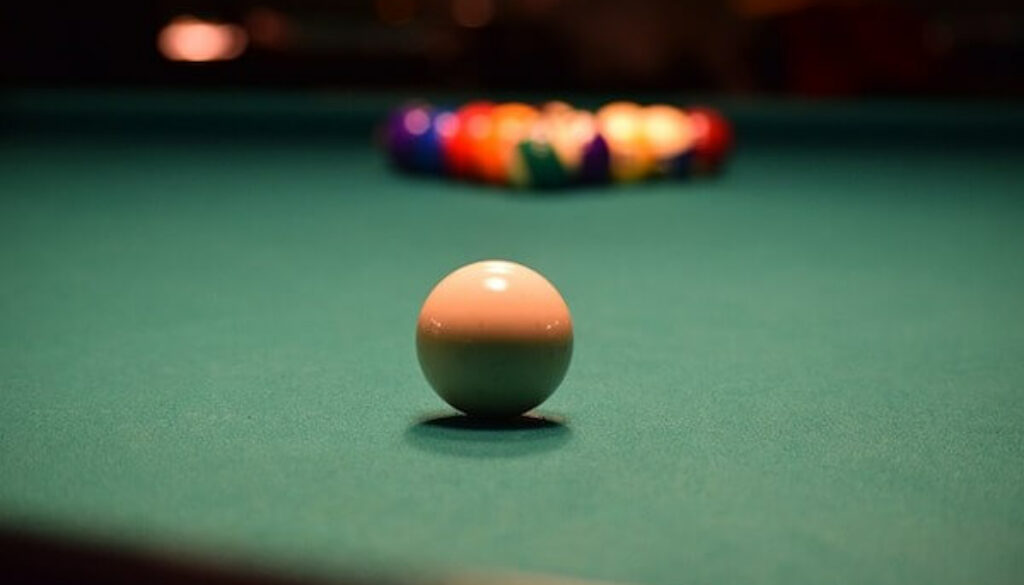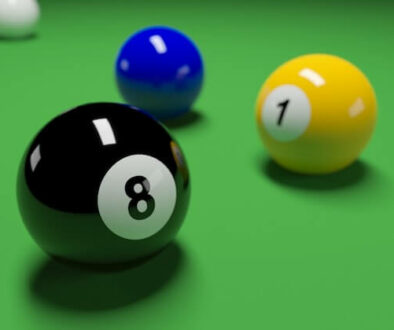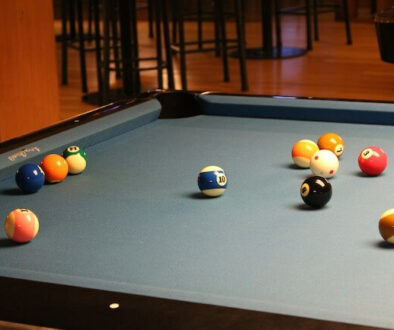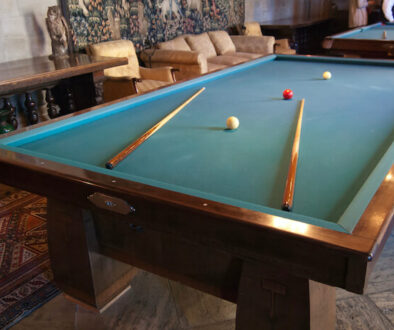8 Ball vs. 9 Ball – Which Game is Best for You?
Table of Contents
If you love billiards, you are likely familiar with two of the most popular games that exist today – 8 ball and 9 ball. These billiard variations each started over 100 years ago and have evolved into two great games that beginners, intermediates, or professionals can enjoy.
Each game has unique strategies, characteristics and rules. Either game, with practice, is sure to sharpen your eye, and your shot at the pool table.
With this article, we aim to educate and inform pool players everywhere about 8 ball and 9 ball. We’ll share things such as game set up/objectives, as well as rules and difficulty levels. Let’s start with the basics – How are 8 ball and 9 ball set up?
Racking 8 Ball and 9 Ball
Before setting up your game of pool, be sure to check out some of the best rack options available right now.
You will find one common rule for racking in each game – you have to place a specific ball in the middle of your rack. Now let’s go over all the racking requirements.
8-ball set up
8 ball is very simple to rack. All it takes is a couple times doing it, and you’ll have it down. Here are the steps:
- Use the typical triangle rack (fits all 15 balls) – you can find examples or buy one here
- The 8 ball will always be placed in the center, in the middle of the 3rd row
- Place the 1 ball, or any other solid, at the top of the rack – see below
- Place one solid ball and one striped ball in the bottom corners
- Randomly place all other balls in the rack (ensures no predictability and a fair game)
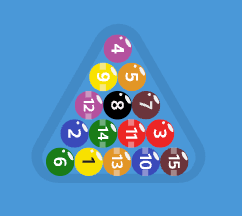
9-ball set up
9 ball is also a simple task to rack. Here’s how you do it:
- You’ll need a diamond shaped rack for this game – all 9 balls will fit in this special rack
- Always place the 1 ball at the top of the rack
- Always place the 9 ball in the middle of the diamond – see below
- Place all other balls randomly in the rack
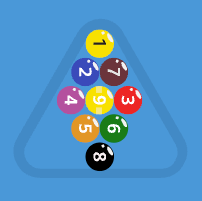
Simple as that! You’re ready to get on with your game of 8 ball or 9 ball.
Next, let’s go over the objectives of each game and discuss how to play and how to win.
How to Play 8 Ball and 9 Ball
In both games, there is an order to follow when striking balls. Players are not allowed to pocket whatever ball they want. Here’s how to play each!
How to play 8-ball
With 8 ball, the player that breaks has the first opportunity to pocket balls. When breaking, the player must keep the cue ball behind the kitchen. The kitchen is the entire area behind the second diamond on a pool table, at the opposite end of the rack of balls.
If a ball is pocketed on the break, the table is still open, and the player continues his or her turn. At this point, the player can decide if they want to take stripes or solids, and must do so before the next shot.
The players now try to pocket their solids or stripes consecutively (regardless of numerical order). If a player misses, the other player takes their turn. The key thing to know here is that the player must call each shot they intend to pocket.
For example, if the player who chose solids sees an easy shot on the 4 ball in the side pocket, they must state “4 in the side”, or something to that effect. Players do not always have to call their shot if the shot is obvious to everyone witnessing the game.
Once all solids or all stripes are pocketed, that player has to try to pocket the 8 ball to win the game.
How to win 8-ball
Winning a game of 8 ball: If you have pocketed all your stripes or solids, and are down to the 8 ball, you must call which pocket you will make the 8 in. If you do this before your opponent, you win!
You can bypass this whole process by making the 8 ball on the break, if you’re playing by APA league rules. Learn more here!
How to play 9-ball
In 9 ball, the player that breaks has the opportunity to pocket balls first, just like in 8 ball. They also have to break the cue ball from the kitchen. But, if the player makes a ball, he or she does not have the choice of which ball to hit next. Here’s why:
In 9 ball, you must play the balls in numerical order. So, if the player breaking makes the 3 on the break, they now have to try to make the 1, then the 2, then the 4, and so on. Whenever a ball is missed, the other player now takes their turn to try to make the balls in numerical order.
9 ball is not a “call shot” game. This is one way 9 ball differs from 8 ball. It is a common misconception that you have to call your shot in 9 ball. This is not the case.
The only requirement is that you need to hit the next lowest numbered ball first to ensure a legal shot. If that ball goes in, or if it hits another ball in (also called a “combo”), you get to shoot again.
Since you don’t call shots in 9 ball, slop is allowed.
How to win 9-ball
Winning a game of 9 ball: There are two main ways to win in 9 ball.
- All other balls numbered 1 through 8 have been pocketed, and now the 9 ball just needs to be pocketed. Whoever does this legally, wins the game. The 9 ball does not have to be called.
- The 9 ball can be pocketed via a combo shot for a win. For example, if one player has to hit the 6 ball next, that player can hit the 6 ball into the 9 ball, which gets pocketed. This player would win the game. Here’s a visual of that situation:
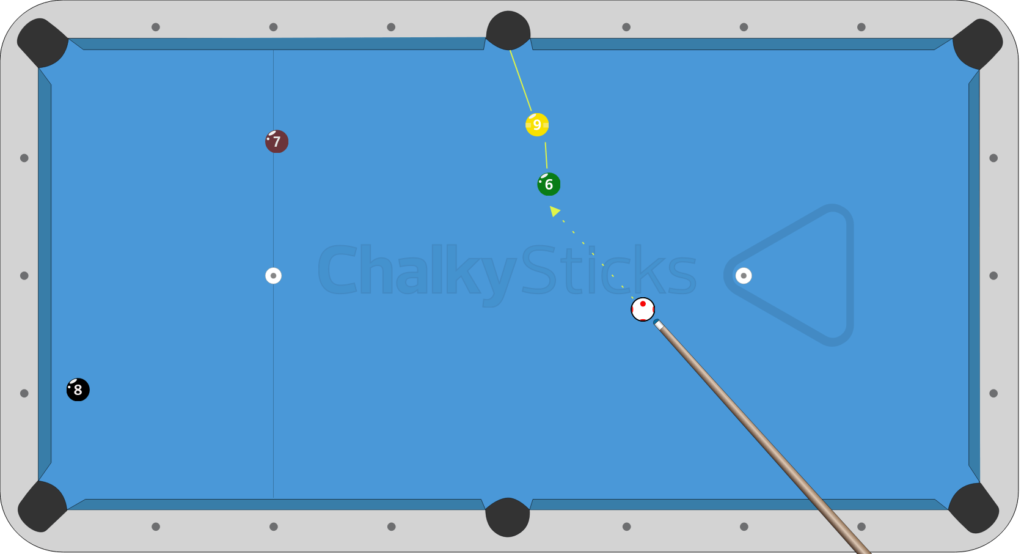
8 Ball vs. 9 Ball Rules
There are unique rules to each game and in order to know what other players expect of you, it’s necessary to get familiar with these rules. There’s nothing more uncomfortable than not being on the same page with another player about a rules dispute, especially if you’re in the middle of a competition.
There are rules that apply to both games, and there are specific rules that apply to each game.
8 ball and 9 ball universal rules
- The cue ball must start behind the second diamond (kitchen) when breaking
- If you scratch on the break (pocket the cue ball), your turn ends and the other player has an open table
- Cue ball striking a legal object ball first results in a legal shot
- 8 ball Legal object ball = stripe or solid (whichever one you have claimed), or the black 8 ball if your stripes or solids are gone
- 9 ball legal object ball = the next ball in numerical order
- For a shot to be legal, a ball must strike a rail, or go in a pocket, after the cue ball makes contact with an object ball
- Avoid fouls such as:
- A double hit on the cue ball with the pool cue
- Pushing the cue ball, as opposed to striking it with a quick contact
- No feet on the floor during the shot
- An illegal jump shot – a shot where the player scoops the cue ball off the table as opposed to hitting down and through the ball to bounce the ball off the slate surface
- Any ball leaving the table and landing on the floor
- You give up your turn when you commit a foul, scratch, or fail to pocket your object ball
- Any foul, scratch, or illegal shot results in your opponent getting a ball-in-hand where they have the choice to place it in any spot
8 ball specific rules
- A scratch on the break results in the other player shooting the cue ball from behind the kitchen line. The cue ball must cross this line before striking another object ball.
- If you make the 8 ball on the break, you have the option to re-rack and break again
- Sometimes in leagues, you win the game if you pocket the 8 ball on the break without scratching – it depends on the establishment you’re playing in
- If you scratch AND make the 8 ball, it’s possible that you have lost the game – see this post to learn more!
- The table is still open after pocketing a ball on the break. The player still has a choice of calling stripes or solids.
- When you call stripes or solids, you must contact that assigned group first with the cue ball
- You need to call which pocket your object ball will go in ahead of time. As long as the ball goes in the called pocket, that’s all that matters.
- If a ball wasn’t called, but was unintentionally pocketed, it remains in that pocket
- You can declare a safety. A safety is where you may pocket a ball you intended to, but give up your turn to the other player. The reason for this is that you left the cue ball in a difficult position for your opponent on purpose.
- You lose the game if:
- You commit a foul or scratch the cue ball when making the 8 ball
- Jump the 8 ball off the table at any point during play
- Make the 8 ball before making all your assigned object balls
- Make the 8 ball in the wrong pocket
9 ball specific rules
- Scratching on the break results in a ball-in-hand for the other player
- If a ball is made on the break, the player can then perform a “push out”
- Push out = cue ball is shot to any spot on the table regardless of contact with other balls or rails
- The opposing player can then shoot next, or return the shot to the player who called the push out originally
- You win if you make the 9 ball on the break (in most cases)
- Sometimes in leagues, you’re required to re-spot the 9 ball if it’s made on the break
- If the 9 ball gets hit off the table, it’s re-spotted
- If you scratch or foul when you make the 9 ball, it’s re-spotted
- Committing a foul on 3 straight shots results in losing the game
Is 8 Ball or 9 Ball Harder?
There are differing opinions on this topic which can depend on a variety of factors like table size, playing style and level of cue ball control. The fact is, it really depends on who you are, and what experience you have.
The easier game to start playing initially is likely 8 ball. This is because you simply have two balls you need to strike first – a stripe or a solid. Also, there are more balls in play and you have more opportunities during a game (assuming your opponent doesn’t run out the table right away).
It’s safe to assume that for a non-professional player, both games have similar difficulty because of all the different variables that come into play.
On one hand, a player with much better cue ball control and feel will likely excel more playing 9 ball. But on the other hand, 8 ball can benefit those who don’t move the cue ball around much because there are so many other balls they can try to pocket at any given time.
Wrap Up
We really encourage anyone that’s interested in pool and billiards to give both games a try. Playing each game regularly helps keep things fresh and will allow you to see more shots and try more types of shots than if you just stuck with one game.
Making yourself a more versatile player will really pay off in the future, and give you more opportunities to play in general, whether it be in tournaments or just for fun.
You could even watch live matches on youtube to try and get a better understanding of the games and see which game looks more appealing to you.
We hope you learned a lot from our comparison of 8 ball and 9 ball, and we welcome you to share any thoughts in the comments!
Happy shooting!
*article contains Amazon affiliate link

